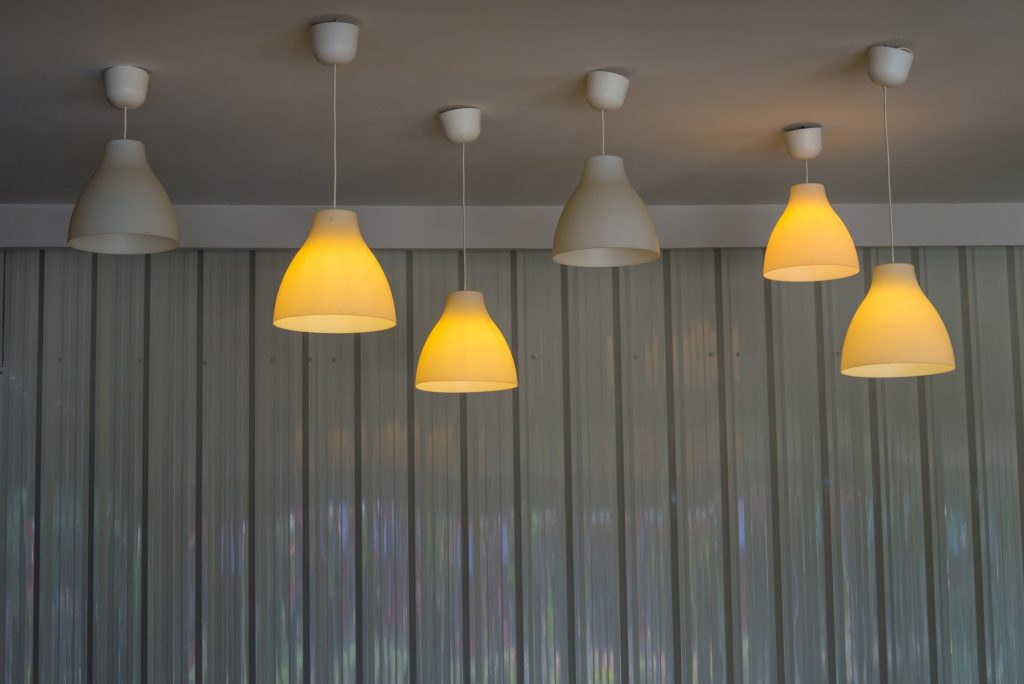A Beginners Guide on How to Install Recessed Lights
Installing recessed lighting helps you save money on your electricity bill, as well as adds a warm light to your room.
If you’re feeling that your apartment or room is looking a little dreary, there are plenty of ways to lighten it up. Recessed lighting can be used to emphasize a piece of art, give you convenient lighting above a desk, or can simply add extra light to your room.
If you’d like to avoid the costs of a professional installation, you can always install them yourself. Don’t worry, you don’t have to be an electrical expert to install recessed lighting.
Today, you’ll learn the easiest way how to install recessed lighting. Whether you’re wondering how to install recessed lighting without attic access, or are looking to find out how to install recessed lights in an existing light fixture, we’ve got you covered.
How to Install Recessed Lights
You won’t have to follow all of these steps if you’re simply replacing an older light with a new one. However, if you’re working with a ceiling that has never had recessed lights, it’ll be a more difficult job.
Required Tools
Make sure you have these tools on hand–you’ll need them over the course of the installation.
- Screwdriver
- Pencil
- Hammer
- Wire Stripper and Wire Cutters
- Stepladder
- Electrical Tape
- Drill
- Drywall Saw
- Fish Tape
- Stud Finder
1. Determine Where to Put Your Lights
Before you start drilling holes into the ceiling, you’ll want to measure out the areas where you want to install your recessed lights. Take a pencil, graphing paper, and measure out your room. Make sure to sketch out furniture and any fixtures on the wall that you may want to highlight with your new lighting.
You should also consider what’s above the ceiling where you’re putting your lights. Having an attic on the floor above makes things a bit easier. However, if another floor is above the ceiling, you’ll likely have to fish a wire through the ceiling or use a shallow ceiling housing.
Don’t forget to use a stud finder to check if there are any joists that will get in the way of installation. If you don’t have a stud finder, cut a 1/4 inch hole into the ceiling and use a fish tape or a coat hanger to check for anything that might be in the way.
2. Pick Out Your Lights
The numerous styles of recessed lighting can be overwhelming, especially for someone who has never installed lights before. Consider going to a light fixture store to have a professional give you a suggestion. Or, if you’re sure on the style you’d like, you can always buy them from a home improvement store.
Housing
The first step in picking out your lights is to choose the housing. There are two main styles: new construction and remodel housing. Lights that are new construction are easy to install when you can access the floor above, while remodel housing lights are perfect if you’re simply replacing a previous light.
You may notice that some lights are labeled as “IC” and “Non-IC.” The “IC” stands for “insulation compatible.” If you have access to the attic, you’ll need to pay attention to this label.
An “IC” housing means that you don’t have to remove insulation when you install the light, while “Non-IC” housing requires that you clear out any insulation that’s in your way.
Baffles and Trim
After you install the housing, a baffle goes over the metal to give the light a more sleek appearance. You can also add a trim that hugs the rim of the housing in order to mask any irregular edges.
3. Turn Off the Electricity
Perhaps the most important piece of advice we can give to you is to shut off all electricity to the circuit where you’re going to be installing the recessed lighting. Make sure to test the wires to make sure that they’re off. To be extra-safe, you can even turn any wall switches off as well.
4. Mark Your Locations
Use the paper template that came with your housing packaging to plan your installation. Grab a pencil to trace the template onto the ceiling in all the locations where you plan to install a light.
If you have attic access and your light is labeled Non-IC, pull away any insulation that’ll be the way of the light. Trace the template or the housing itself to mark where you’ll cut.
5. Cut Holes in the Ceiling
Using a drywall saw, carefully cut out the outline you drew.
6. Wire Your Lights
If you are unfamiliar with electrical work, it’s recommended that you have an electrician run wires through the ceiling. Visit Puckett Electric to learn more about hiring an electrician.
You can use fish tape to run 14/2 nonmetallic electrical cable through each light hole. Connect a cable connector to your recessed light’s electrical box, and place the cable inside the box. Using your wire strippers, strip off the insulation from the tip of the electrical cable.
Connect the wire to the light as follows: white to white, black to black, and bare copper to bare copper. Make sure to add twist-on wire connectors to keep your wires fastened, and put the cover back on the box.
7. Install Your Lights
Place the housing into the hole, while making sure it snugly fits inside the ceiling. Inside the housing, there are four metal clips that need to be pressed down. Take a hammer and gently tap them to ensure that they’re secure.
Install your light bulbs and turn the power back on. If your lights come on, then great job!
Do It Yourself
You can save money on recessed lighting cost by simply doing it yourself. While you still may need to hire an electrician to run wires through the ceiling, you’ll still be saving yourself from paying pricey light installation costs.
Learning how to install recessed lights can be a challenge, but it’s very rewarding in the end. After you’re done, you can flip on the lights, enjoy the extra brightness in the room or admire your favorite piece of art under a spotlight.
For more fun DIY projects, check out our blog.





